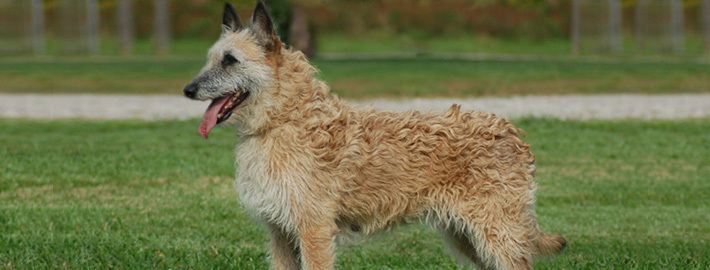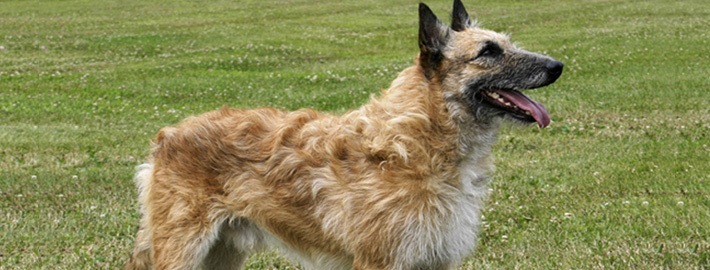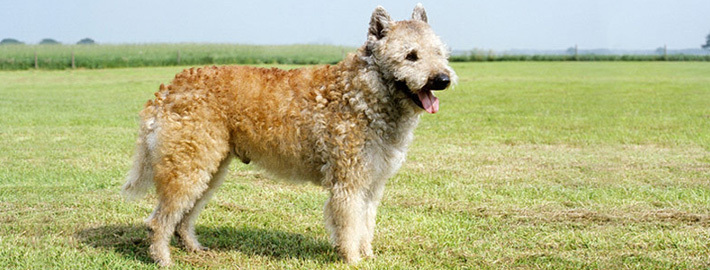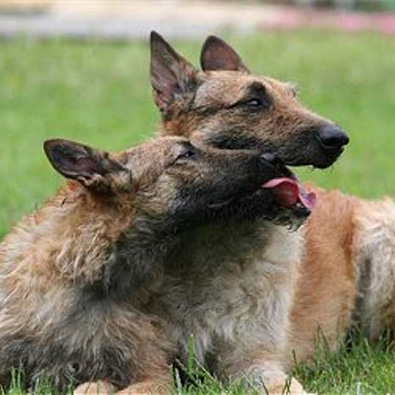What makes the Belgian Shepherd Laekenois Unique?
An intelligent and sociable breed that thrives under firm, fair leadership. Originally bred as a sheepdog, they are increasingly finding work with security services due to their ability to manage complex tasks with ease.
Page Contents
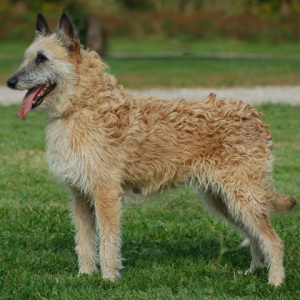
SnapShot
| Size: | Males – 60 to 66 cm (24 to 26 inches) Females – 56–62 cm (22 to 24 inches) |
| Weight: | Males – 25 to 30 kg (55.1 to 66.1 pounds) Females – 20 to 25 kg (44.1 to 55.1 pounds) |
| Origin: | Belgium |
| Life Span: | 12 to 14 years |
| Colour: | Fawn Sable, Mahogany, Red, Fawn, Black & Tan, Red Sable |
| Litter Size: | 6 to 10 puppies |
Is the Belgian Shepherd Laekenois Right For You?
The Belgian Shepherd Dog Laekenois is a breed of dog, sometimes classified as a variety of the Belgian Shepherd Dog rather than as a separate breed.
Intelligent and alert, the Belgian Laekenois is protective of his master and property. Although observant with strangers, the breed is affectionate and friendly with those he knows well. The Laekenois coat requires regular brushing and occasional bathing, and as a working dog, it needs daily exercise.
In 5 Words
- Lively
- Watchful
- Protective
- Alert
- Energetic
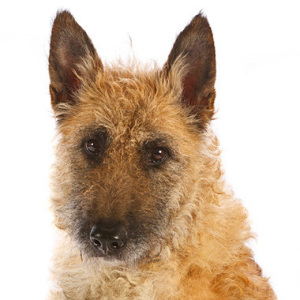
Characteristics
Learn About the Belgian Shepherd Laekenois
Description
The body is sturdy and well proportioned, with a squarely shaped appearance when viewed from the side. The erect ears are triangle in shape with the height equal to the width, set high on the head. The moderately pointed muzzle is parallel to the topline of the skull and tapers, but is not excessively pointy. The muzzle and head are fringed, giving the dog a shaggy, woolly look. The medium sized, almond-shaped eyes are dark with rims that contrast with lighter color hair. The hindquarters are muscular, without looking heavy. Dense hair is bushy on the tail, but there is no distinct feathering. The chest is deep, reaching to the elbow. The front legs are very straight and parallel and vertical to the ground. The round feet are cat-like in appearance. Dewclaws are usually removed. The long tail is thick at the base and reaches at least to the hock. The nose is black and the lips should be tight. The teeth should meet in a scissors or level bite. The Laekenois’s medium length rough, wire coat covers the body in hair that can reach over two inches. Colors include a range from fawn to mahogany with a black overlay.
Short History of the Belgian Shepherd Laekenois
The Laekenois’ original duty, in addition to guarding and tending the flock, was to guard linen drying in the fields. The breed also served as a messenger dog during World War I and II, which decreased the breed’s numbers. Many breeders worked very hard to restore this variety, while retaining the typical Belgian Shepherd Dog intelligence, type and structure. Today, the breed is still able to herd and guard its flock, and protect its people and property.
Temperament
The Belgian Laekenois should reflect the qualities of intelligence, courage, alertness and devotion to master. Protectiveness of the person and property of his master is added to his inherent aptitude as a guardian of flocks and fields. He should be watchful, attentive and always in motion when not under command. He should be observant and vigilant with strangers, but not apprehensive in his relationship with humans. He should not show fear or shyness nor viciousness by unwarranted or unprovoked attack. With those he knows well, he is most affectionate and friendly, zealous of their attention, and very possessive. Extreme shyness is not desirable in the Belgian Laekenois and should be severely penalized. Viciousness is a disqualification.
Caring for Your Belgian Shepherd Laekenois
General Health
The Laekenois is an extremely hardy breed of dog with no major Health concerns to report. Some simple Health Problems to be aware of include:
Excessive Aggressiveness-This is mainly a problem in dogs which have not been properly trained early on in life.
Hip Dysplasia-Officially known as Canine hip dysplasia, it can cause the dog to have mild-severe lameness.
They can also suffer form skin Allergies, elbow dysplasia and eye problems. Overall though they are a healthy breed and you should not have to spend thousands of dollars at the vets.
Grooming & Bathing
The rough, wiry coat of the Laekenois needs to be trimmed about twice a year, depending upon the quality of the coat. Dead and excessive hair should be removed. Resist suggestions to have your dog close trimmed as this ruins the coat for several years. In addition to the occasional light trim, use a coarse-toothed comb for grooming. The fawn-colored coat is harsh, dry and normally slightly tangled. It should be rough-looking but never curled. Bathe only if it is absolutely necessary, as bathing removes the waterproofing of the coat.
Exercise & Training
This is a working dog that is accustomed to an active outdoor life. As such it needs a lot of exercise, including a long daily walk. In addition, it will greatly benefit being off the leash as much as possible in a safe area.

